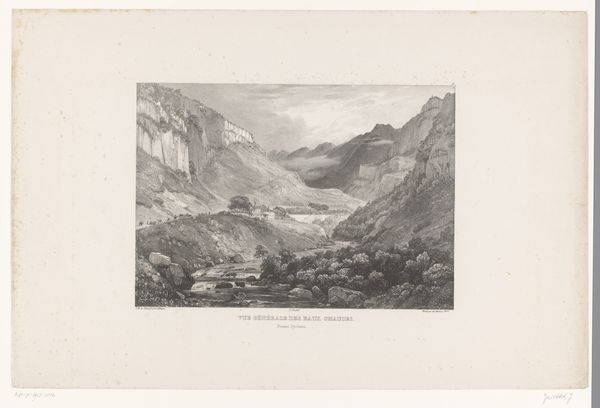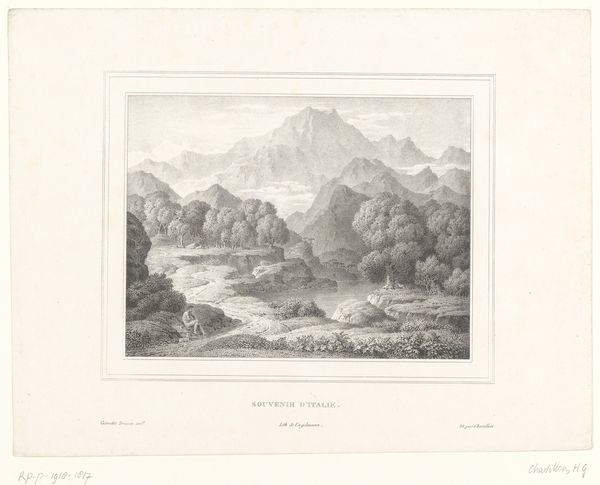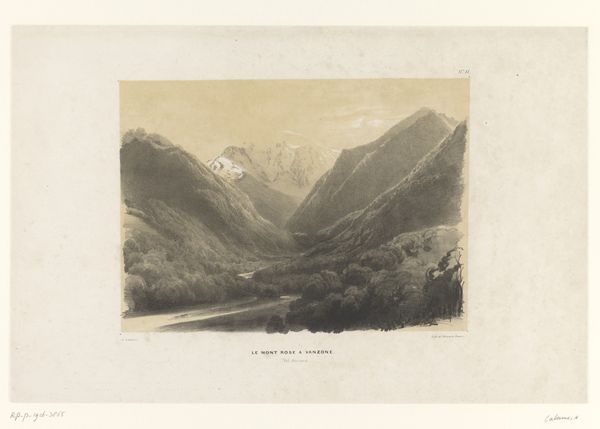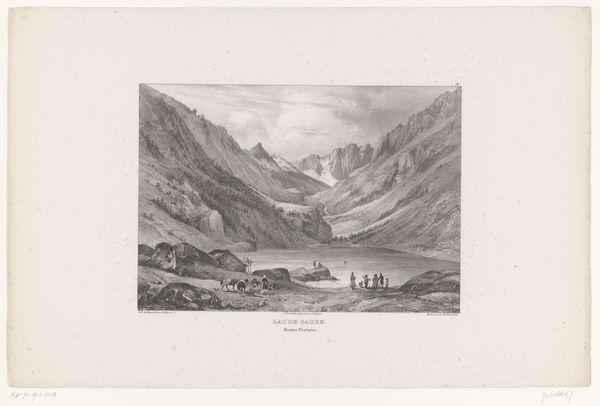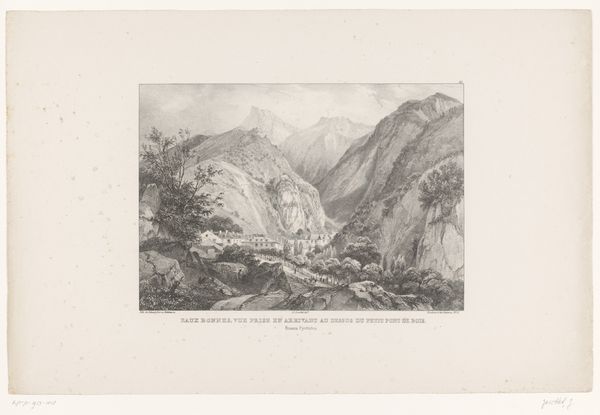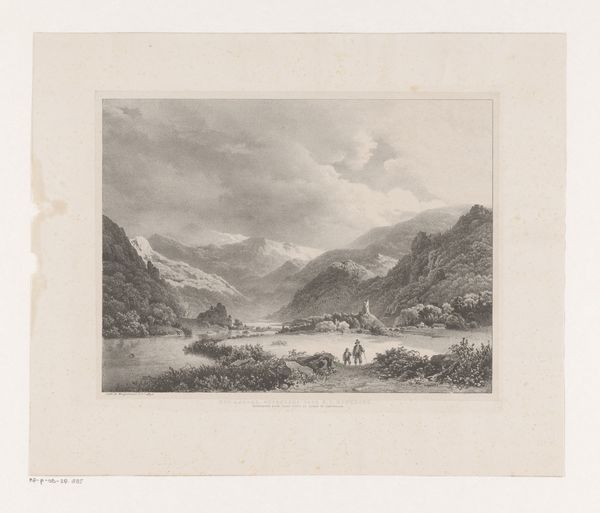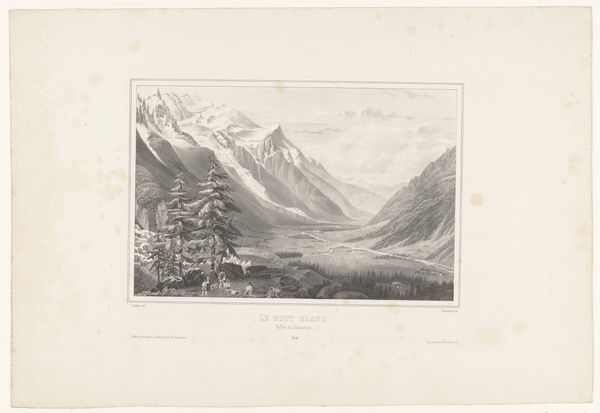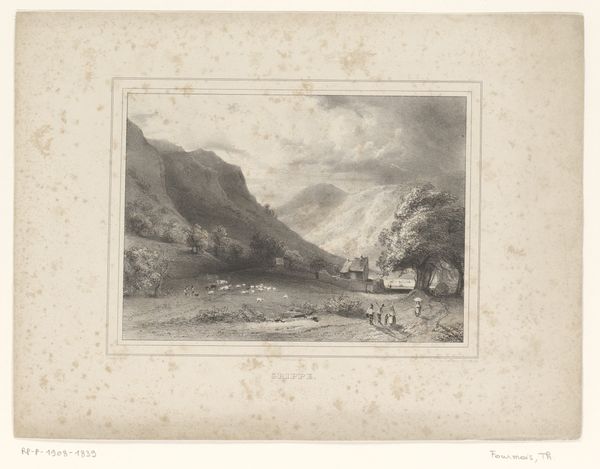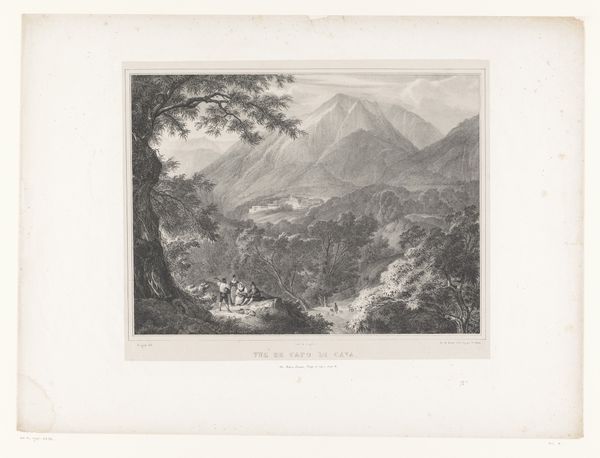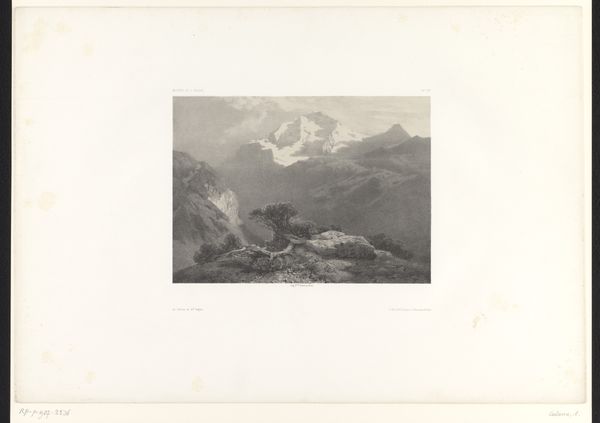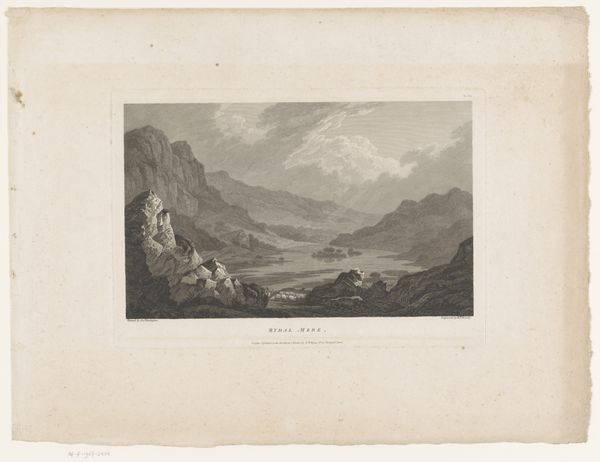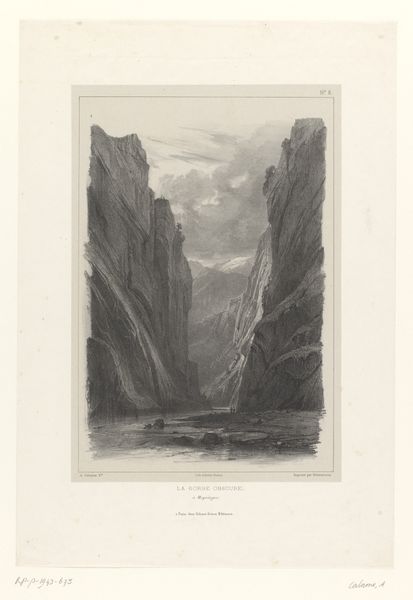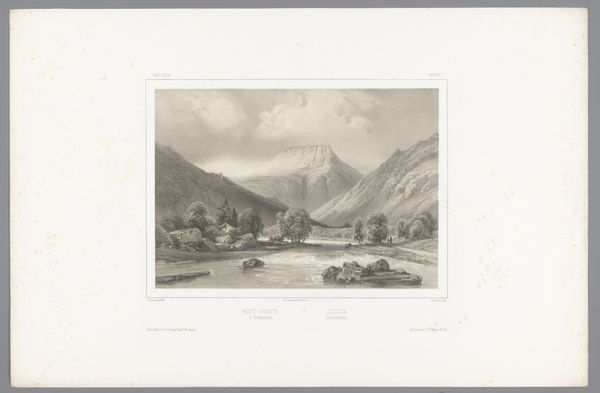
print, engraving
#
aged paper
#
narrative-art
# print
#
landscape
#
figuration
#
form
#
personal sketchbook
#
romanticism
#
line
#
sketchbook drawing
#
engraving
Dimensions: height 280 mm, width 360 mm
Copyright: Rijks Museum: Open Domain
Curator: What a contrast – mountains like sleeping giants loom behind figures on a beach! This is "Meeting with the inhabitants of Ombay in Indonesia" dating to 1822, made by Jacques Etienne Victor Arago. It's an engraving, so a print. Editor: There's an undeniable serenity despite the implied interaction between the Europeans and the Ombay people, like two separate realms meeting at the water’s edge. What narratives does this imagery hold, embedded as it is within colonial history? Curator: The layered depiction hints at a world yet to be fully grasped. The European delegation almost seems to stage itself, with the Ombay people nearby; both hold their separate places as the palm trees oversee this cultural staging, where the natural, raw setting is a powerful symbol itself. Editor: Absolutely, the backdrop is key to deciphering this "meeting". These monumental natural features frame the encounters between colonizers and Indigenous populations. What impact do these compositions have on constructing or reinforcing particular viewpoints on power dynamics? Curator: This engraving might reflect a vision – a longing for order imposed from a distance. Those majestic peaks contrast with the perceived 'wildness' of the gathering by the beach. The delegation almost has an air of choreographed observation of Ombay people within that untamed realm. The natural forms mimic their social posture and beliefs. Editor: You are right. Think, though, how this image, as a representation of a colonial encounter, carries with it a history of imbalances, control, and the act of portraying the "other" according to a particular European vision. We should also recognize these symbols can speak to resistance and cultural persistence by the people who were portrayed as ethnographic specimens. Curator: Indeed. These figures could tell their version of their own tale of resistance as figures beyond their form. Perhaps someday those peaks will also "speak," disrupting such staging and providing another dimension of the past that contests the colonial image. Editor: It becomes critical to investigate how institutional history has shaped the understanding and presentation of artworks from periods marked by global exchange and power imbalance. Thanks for bringing it into perspective, that art allows us to see many sides and remember their interplay through symbols! Curator: Thank you, delving into historical context revealed layers to its forms! These engravings reflect moments of cultural crossroads and a reminder of their complexity.
Comments
No comments
Be the first to comment and join the conversation on the ultimate creative platform.
